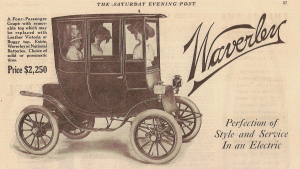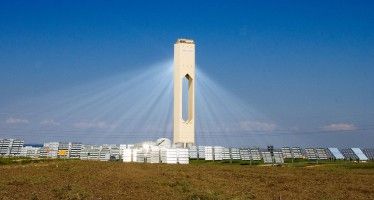CARB chair plugs electric cars
By Joseph Perkins
Mary Nichols was in Detroit this week for the Society of Automotive Engineers annual World Congress. The chairwoman of the California Air Resources Board told attendees that her agency wants to have better relations with the auto industry.
“If we can collaborate,” said Nichols, “we can be successful together. If we don’t, the consequences can be something we don’t want to talk about.”
Indeed, there has been little love lost over the years between CARB and the nation’s automakers over the Golden State’s auto emission and fuel economy standards, which historically have been considerably more onerous than federal standards.
“We do this in California not to drive you crazy,” Nichols told gatherees at the Motor City’s Cobo Center, “but to address our unique air quality problem.”
Thus, CARB’s mandate that one in seven new vehicles sold in California by 2025 be an electric car or some other zero-emissions vehicle.
Nichols, head cheerleader for electric cars, has convinced herself that CARB’s goal is achievable within the next dozen years. But for her fantasy to become reality, automakers will have to sell more than 40 times as many electric cars in 2025 as they did in 2012.
At least one CARB board member, Sandra Berg, thought the regulatory agency unwise to force automakers to sell electric vehicles California’s car buying public clearly does not want. She attested that she owned an EV herself, a Nissan Leaf, and understood the public’s reticence to abandon its conventional gasoline-powered vehicles for battery-powered flivvers.
Indeed, EVs are considerably more expensive than conventional cars. It takes roughly eight hours to fully charge an EV, whereas a conventional car can be gassed up in a matter of minutes. And the average EV has a driving range of only 100 miles (which is reduced when demands are put on the battery, such as cold weather, not weather or air conditioning).
“Early adopters (of EVs) are willing to go without heat to save the miles they need to get to their destination,” said Berg. “But that is not going to help grow the consumer base.”
Demand
The most Nichols is willing to concede about the underwhelming demand for EVs is that it was quixotic of her, and others, to think that much-hyped start-up electric car companies like Anaheim-based Fisker Automotive and Palo Alto-based Tesla Motors would be pioneers of California’s next great industry.
Now she thinks growth in the electric car market, such as it is, will be driven by same automakers that have dominated California new car sales for years: Toyota, Honda, Ford, GM, Nissan and Chrysler (with Hundai/Kia moving up fast).
Yet, those market-dominating automakers are not nearly as confident in demand for EVs here in the Golden State increasing to the point that they account for 1 in 7 new car sales by 2025.
CARB “can make us sell a minimum amount of cars,” Kevin Kinnaw, Toyota’s U.S. Manager of Regulatory Affairs, told the Wall Street Journal, “but, unfortunately, they can’t make people buy them, or even get our own dealers to order them from us.”
Meanwhile, Sergio Marchionne, CEO of Chrysler, which debuted its battery-powered Fiat 500e at the Los Angeles Auto Show, estimated that the automaker will lose as much as $9,000 on each of the EV it sells.
None of that matters to Nichols. She just wants to see so many electric cars on the Golden State’s freeways and roads — even if automakers have to give them away.
Related Articles
Bullet train fans learn CA enviros’ clout trumps building, trades unions
A few years ago, I began to think about how California’s state government operated in terms of Maslow’s hierarchy of
No more talk, talk, talk!
JULY 16, 2010 First the awful news. But don’t worry – we’ll get to the ugly stuff later… That’s right,
Solar power no help during CA’s late peak winter hours
Solar power is popular nowadays as a “renewable,” non-polluting energy source. It helps California comply with AB32, the Global





